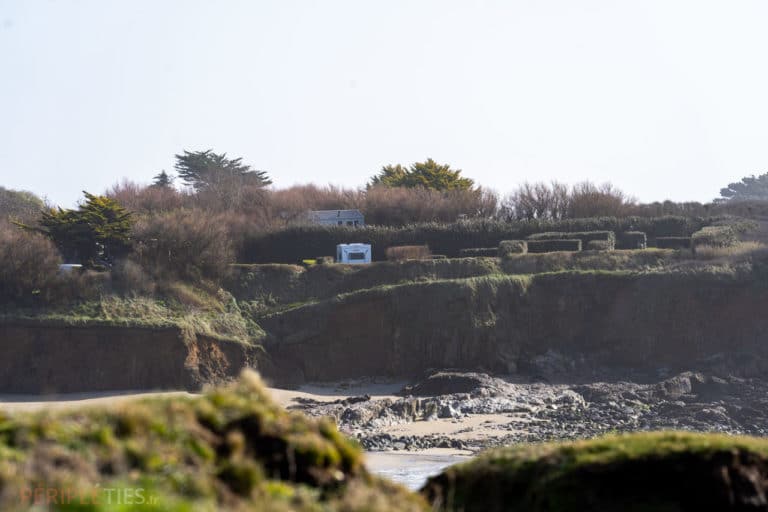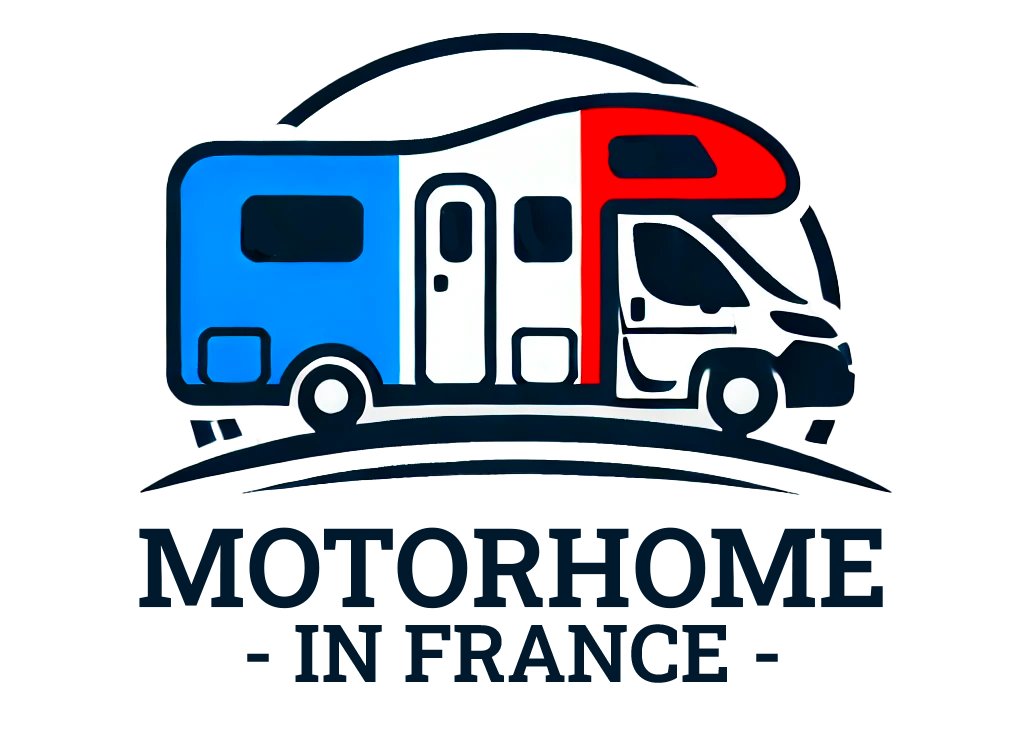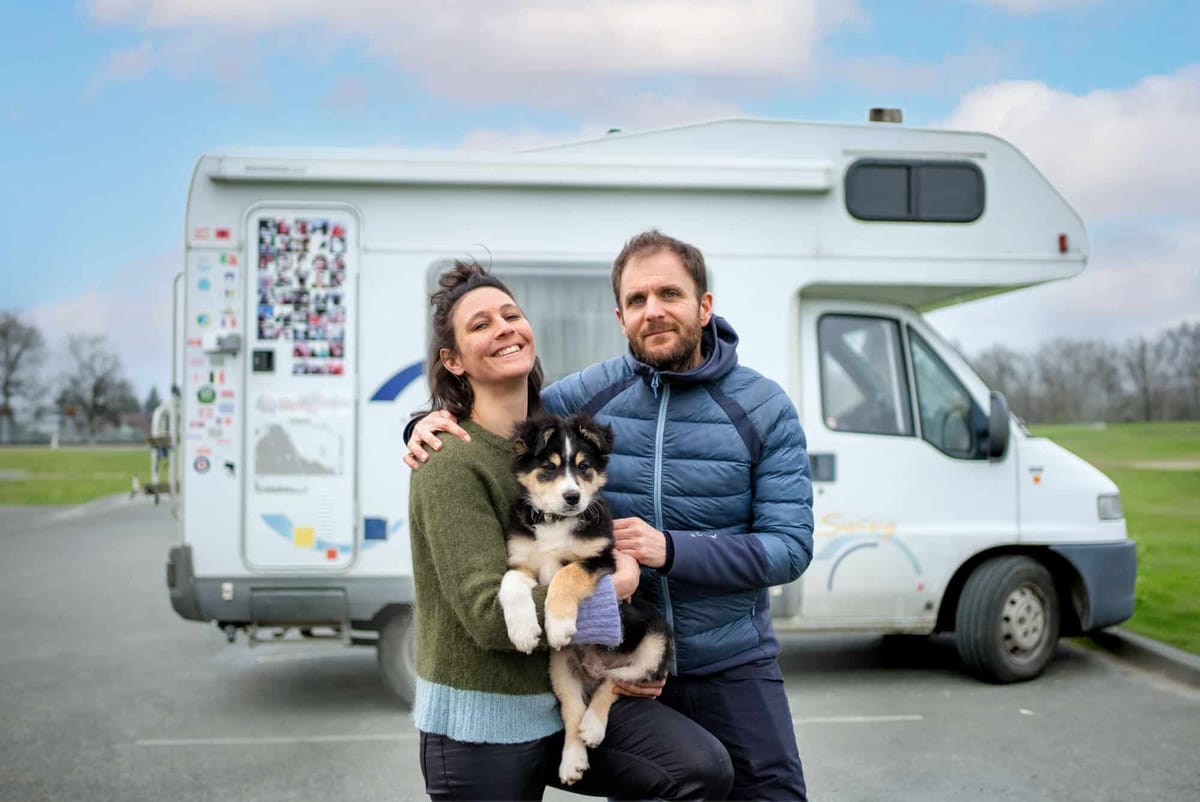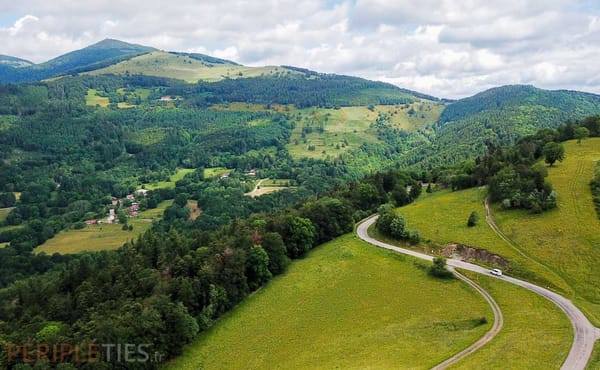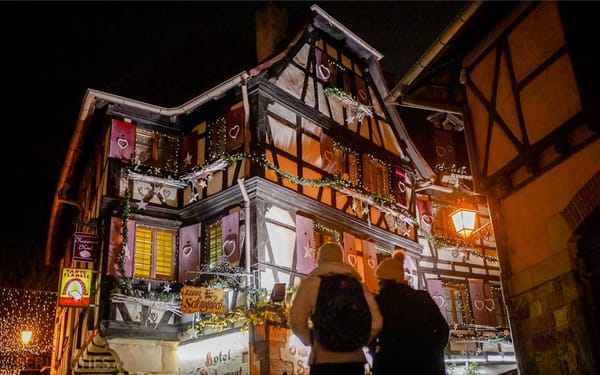Discover the charms of Brittany thanks to our two itineraries (with maps) on the Finistère and Morbihan coasts, not forgetting of course inland excursions to discover Breton culture and traditions.
In the article you'll also find all the practical information you need on parking, hire and useful guides for visiting Brittany in a converted vehicle.
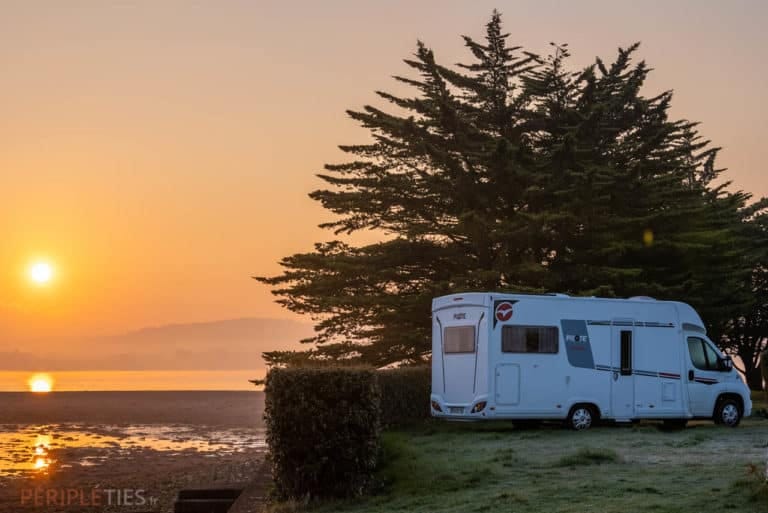
What tour is best for visiting Brittany by motorhome?
Here you'll find a two-part route for visiting Brittany by motorhome.
The first part is in the northern part of Brittany. It explores North Finistère from the Pink Granite coast around Perros-Guirec (Côtes d'Armor) to the Crozon peninsula, taking in the Abers coast and the Pays d'Iroise, and includes an inland excursion to the Monts d'Arrée.
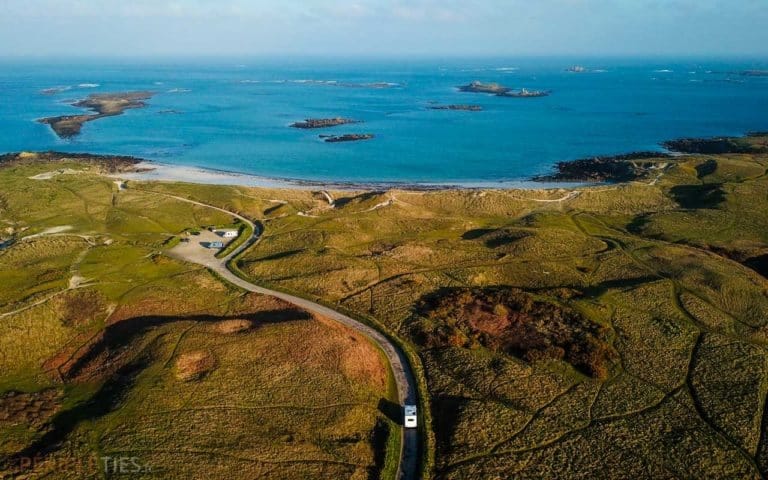
Brittany in a motorhome in 15 days?
The second part of the tour starts in the south of Finistère, exploring the Pays d'Aven and the town of Concarneau, but also taking in the wider Morbihan region and the unmissable sites of southern Brittany. In our opinion, a 15-day tour is necessary to get the most out of your discovery.
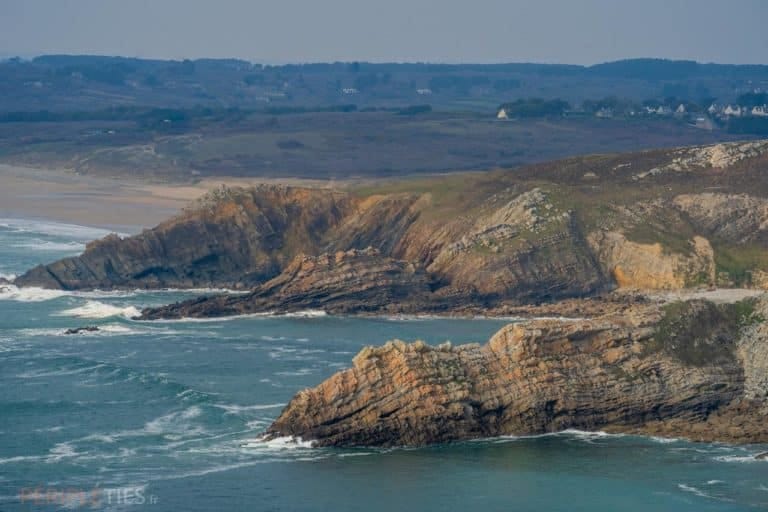
Useful tourist guides for your trip to Brittany
If we entrust you with our itinerary, guidebooks (see below) such as the Routard Bretagne Nord ou Sud and the Guide Vert Bretagne Nord ou Sud can be really useful for identifying places to stop and eat. Michelin also has a Carte routière touristique de la Bretagne with a good selection of addresses.
Visiting northern Brittany: our map and motorhome itinerary
The first part of our motorhome trip in Brittany starts on the Pink Granite Coast (Côtes d'Armor) near Lannion and Perros Guirec, where you can admire the piles of rocks that turn a pastel colour at sunrise and sunset.
From the Pink Granite Coast to the Crozon Peninsula in a motorhome
We'll be doing some walking and discovering Breton breweries with the help of our Rando-Bière Bretagne guide (a must if you want to find the best places to go! ), then heading for Finistère via the Bay of Morlaix.
The surrounding area offers numerous beaches and a breathtaking coastline, particularly around the Primel and Diben points.
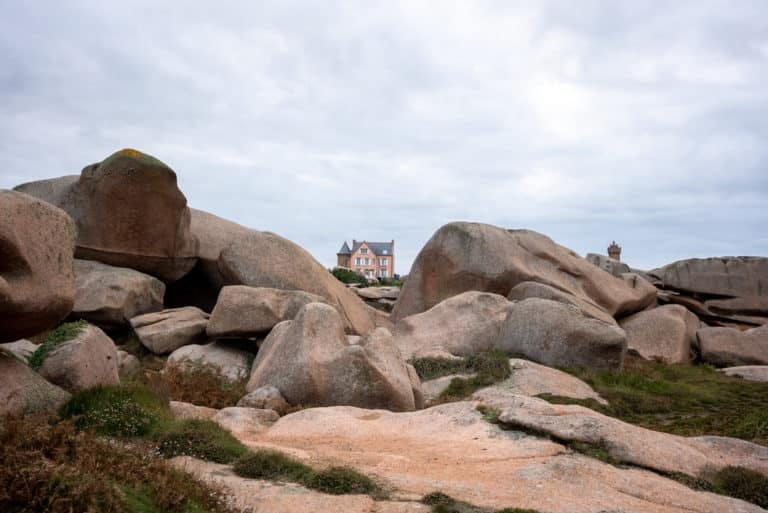
Morlaix, its market and viaduct
The town of Morlaix is well worth a visit, with its old centre guarded by a large viaduct and its Saturday market, which takes place in a friendly atmosphere. Here you can stock up on seafood and Breton flavours.
We recommend that you take the road alongside the port, where the boats wait to be released at high tide, and then continue on to Roscoff.
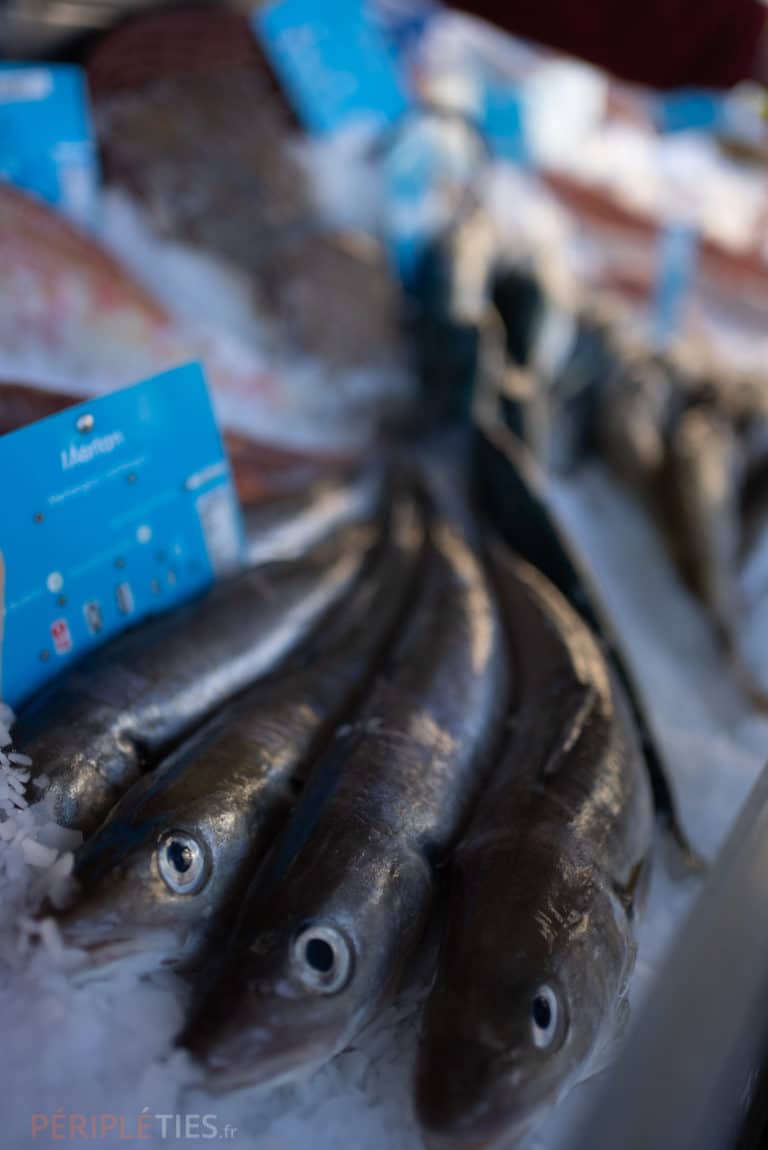
Where to sleep in a motorhome / van / camper van on the Finistère coast?
You'll find service areas and campsites along the Finistère coast (see a few examples at the end of this article). Although free camping is more tolerated than in Morbihan, there are more and more height bars in car parks and signs prohibiting vehicles from parking between 10pm and 8am.
Don't forget the France Passion network, which we've tried out, where you can park your motorhome, van or van at the homes of Breton producers and winegrowers and discover their skills! Use our promotional code to get a discount on the France Passion guide for all first-time members.
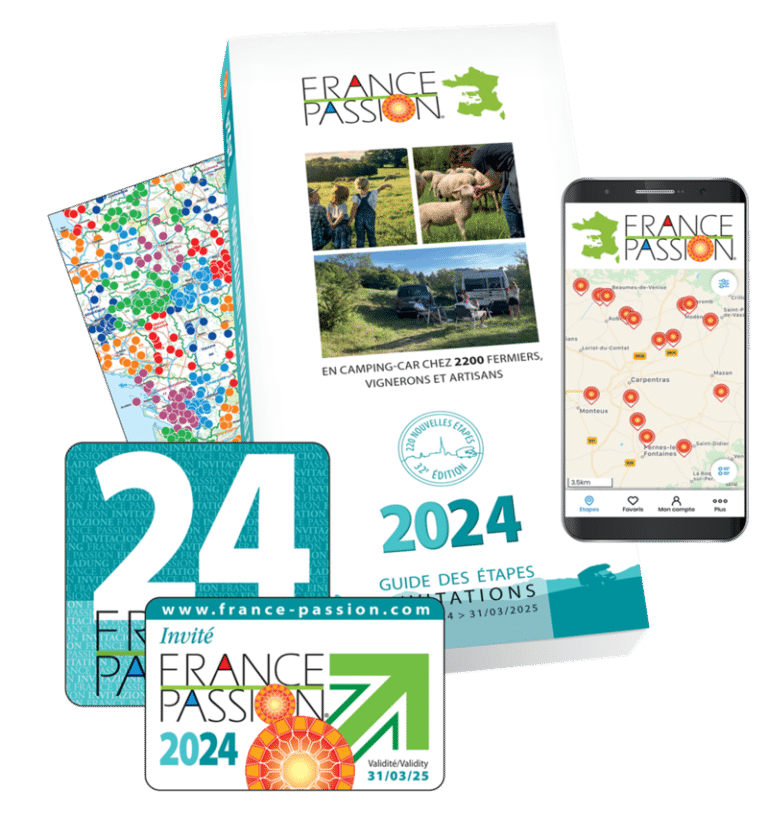
Buy the Guide France Passion 2024
The 32nd edition of the 2024 Milestones guide (March 2024 -> Easter 2025) costs 33 euros this year, but with our promotional code, save 2 euros on your first subscription (delivery and postage included).
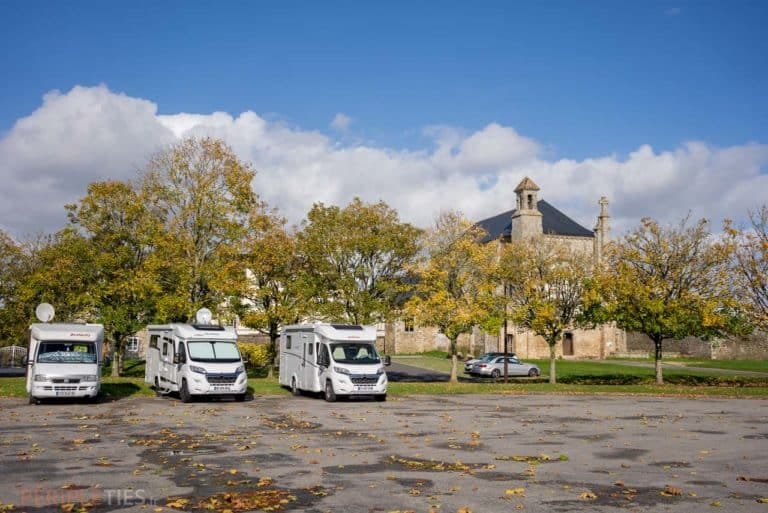
Roscoff: a stopover with a special touch
A key link between France, the UK and Ireland, Roscoff is also renowned for its onion-growing industry. It's a not-to-be-missed stop on the tour, if only to stroll through the narrow streets of the old town!
You can immediately feel the bustle of the town, boosted by fishing, thalassotherapy and tourism. You'll also have the chance to take a trip to the island of Batz, just offshore.
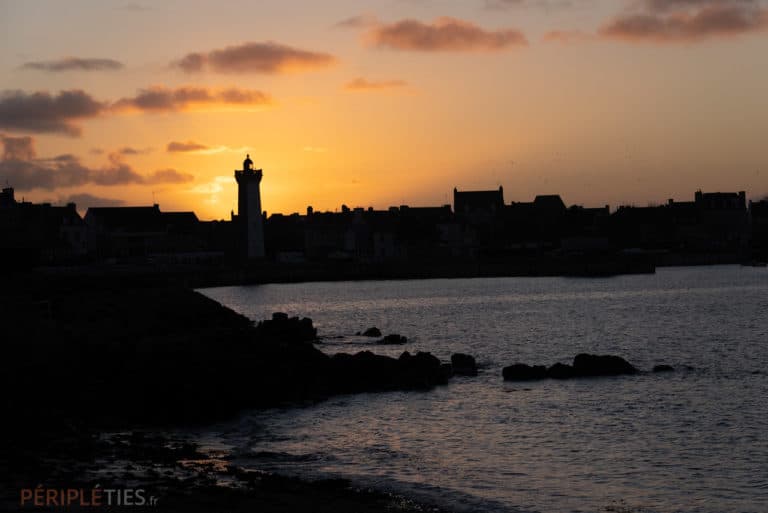
An excursion to Batz Island
Batz is a small island, but despite the sinking of an oil tanker off its coast in the 1980s and its direct proximity to the mainland, it has managed to remain an unspoilt island with a very authentic character.
You can get to the island by taking one of the Vedettes de l'île de Batz, which runs a return trip several times a day for 10 euros.
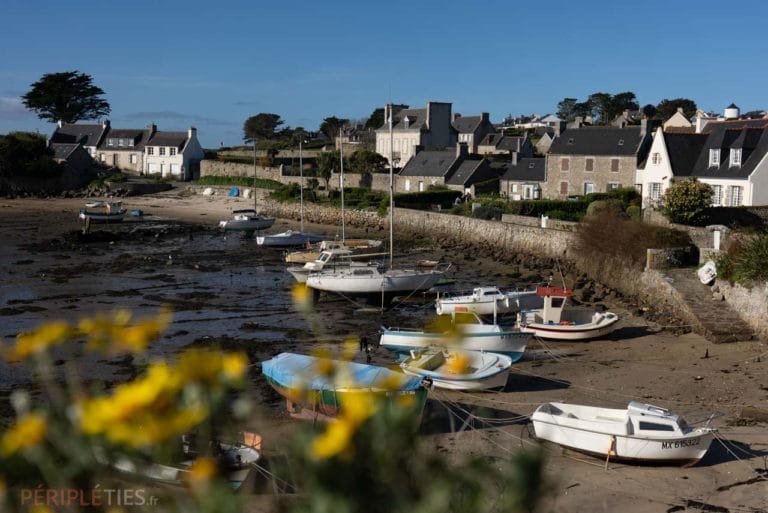
Where can you enjoy the best Kouign Amann?
In 2022, the best kouign amann can be tasted in Saint-Congard, in the Morbihan region of Brittany, but Roscoff has many shops and excellent bakeries selling the Breton butter cake (La Maison Du Kouign Amann, Maison Georges Larnicol).
Perhaps a walk along the coast to the exotic gardens is in order to digest it all! Or perhaps you'd prefer to explore the island of Batz on foot or by bike? Several boats provide the link
On the "Coast of Legends"
Leaving Roscoff, head for Sibiril to visit Kérouzéré castle, a legacy of the Middle Ages. Then continue along the departmental road 10 along the ‘coast of legends’ to Brignogan-plages and the Pontusval lighthouse.
The highlight is undoubtedly the site of Meneham and its village of seaweed farmers. Seaweed, the large seaweed sometimes found washed up on beaches, was once burnt to extract iodine.
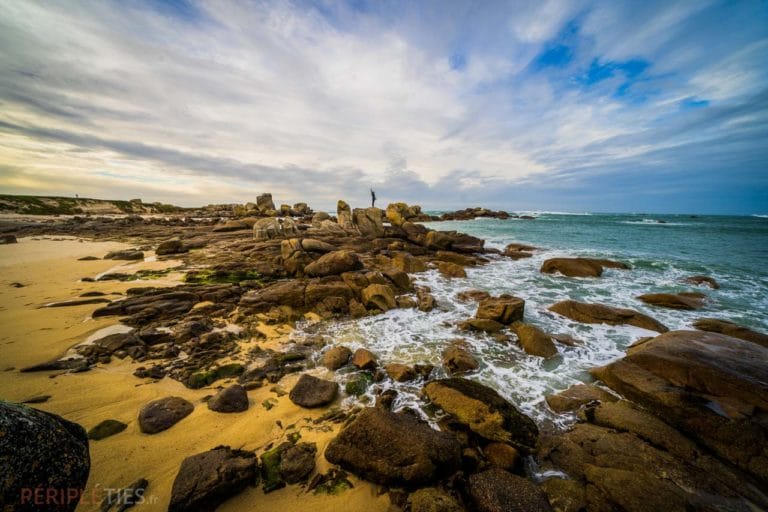
The site of Meneham and its village of Goémoniers
The village has been transformed into an eco-museum, reception point, guest rooms and restaurant. As for the setting, the landscape opens out onto an immense fine sandbank and the English Channel, from which extravagantly shaped granite boulders emerge!
In the distance, you can already make out the Île vierge lighthouse, the highest in Europe (82.5 metres above the ground). Located in the commune of Plouguerneau, it can be visited from April to October and even has a gîte at the top! You'll need to climb a total of 397 steps to get there.
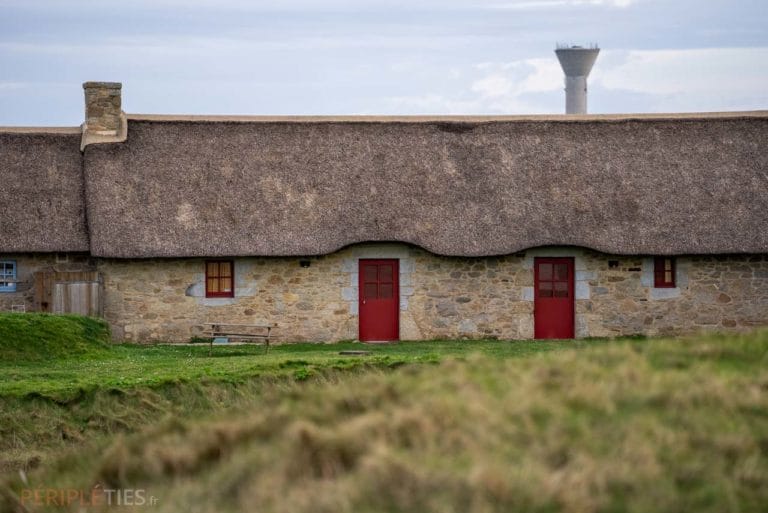
The most beautiful roads in Brittany by motorhome
From here, you head off along the Abers coast (estuaries), undoubtedly one of the most scenic roads in Brittany, with its inlets of sea rushing deep inland...
At Aber-Wrac'h, the corniche runs alongside the Bay of Angels. We recommend climbing up to the semaphore to admire the view over the bay. However, you'll need to be careful with the size of your motorhome, as the alleyways are narrow!
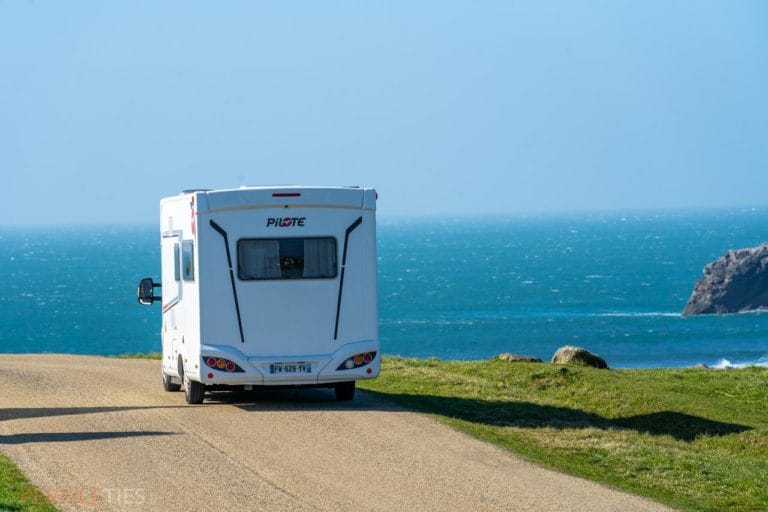
The dunes and beach of Sainte-Marguerite
The other side of the Aber takes you to the Sainte-Marguerite dunes, then across the Aber Benoît.
Small roads lead you to paths that are best explored on foot. If you're a camper van, it may be difficult to use them, depending on the width of your vehicle.
Continuing along the coast, this time you'll pass close to the Corn-Ar-Gazel dunes. A magnificent stretch of road runs along the coast between Portsall and Melon.
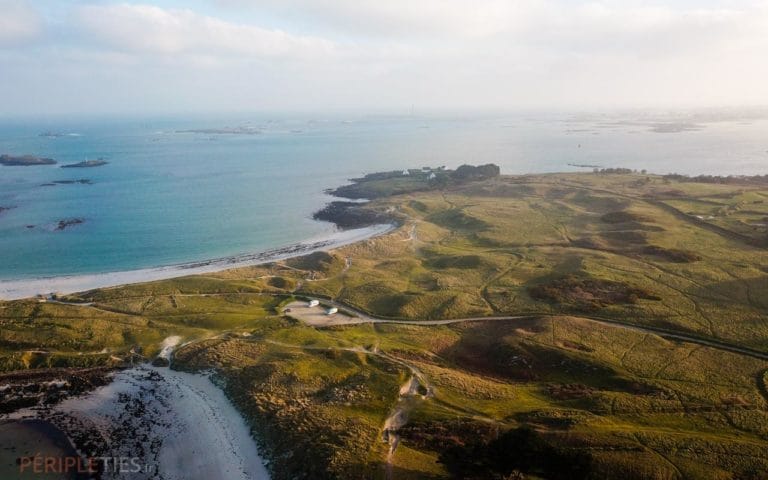
The Molène archipelago and Ouessant island
Continuing along the coast, there's no shortage of opportunities to take a break and admire the chapel of Saint Samson, take a stroll along the Saint-Laurent peninsula, sit down in a crêperie or seafood restaurant or pick up a few shellfish to enjoy on the beach with a glass of Muscadet!
Further offshore, in the Iroise Sea, are the Molène archipelago and the island of Ouessant, the furthest from the mainland. This is where the waters divide between the English Channel and the Atlantic Ocean.
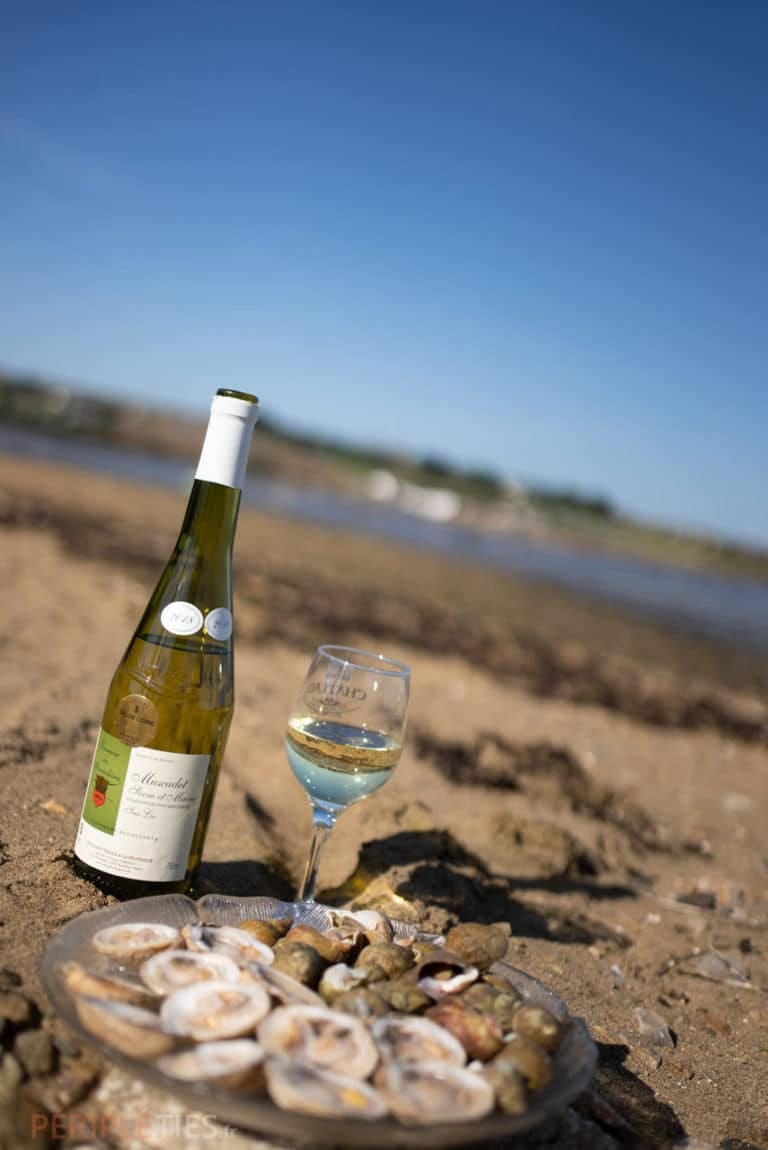
Towards Le Conquet and Pointe Saint-Mathieu
You will finally reach Le Conquet, a pretty and dynamic fishing port. The town attracts crowds at sunny weekends and during the high season. It will be difficult, even difficult, to find a parking space, especially when motorists are invading the car park reserved for motor caravans...
You can then continue along the coast to Pointe Saint-Mathieu, with its lighthouse, the ruins of its abbey facing the sea and the Memorial to Sailors who Died for France. This part of the route offers lovely views over Brest harbour, guarded by the Bertheaume fort.
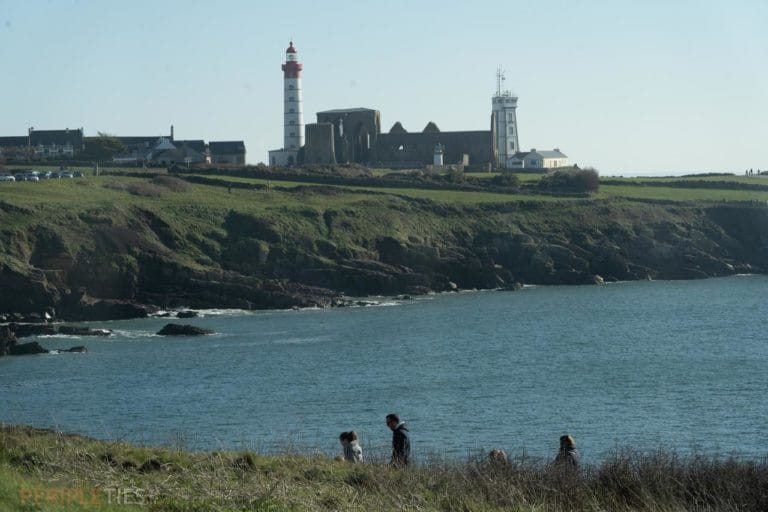
It is located on a rocky islet and linked by a footbridge. A former military building, it was bought by the commune of Plougonvelin and now hosts sound and light shows retracing its history, exhibitions and an adventure park.
What to do in Brest
Brest is a city with its sights firmly set on the ocean, and its strategic position has always made it an important base for the French Navy. Here, the defence sector accounts for 15% of total employment.
Bombed several times during the Second World War (only 200 buildings remained standing at the time of the Liberation), Brest's Recouvrance district still has a pre-war appearance. The city centre, meanwhile, bears witness to post-war urban planning. There is also a large aquarium, ‘Océanopolis’, which tells the story of the oceans and marine life.
The Civitatis website offers guided tours of Brest to discover the city's most emblematic monuments.
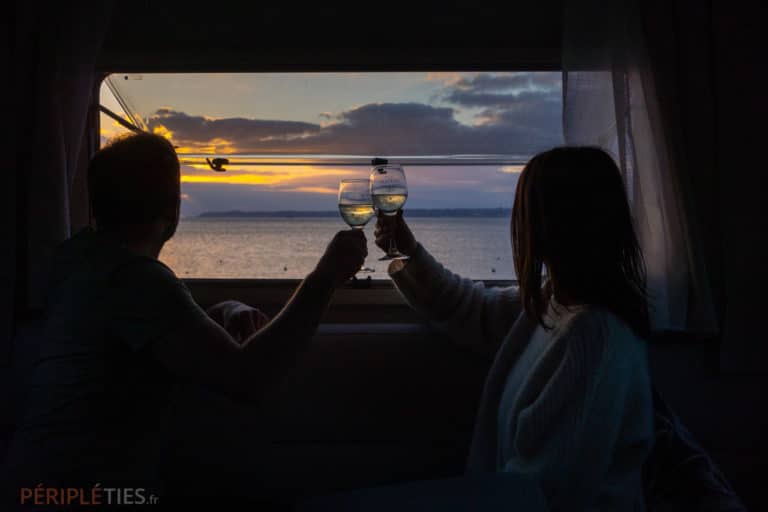
The Plougastel-Daoulas peninsula
Take the Iroise bridge to Plougastel-Daoulas. Famous for strawberries, imported from South America in the 18th century, as well as scallops, the peninsula has retained its old-world charm with its small fishing ports and fairly secluded beaches.
Far from the main roads, it is often neglected in favour of the neighbouring Crozon peninsula. Bicycles or electric scooters will be welcome to explore the hamlets, with their narrow streets that are often too narrow for a camper van.
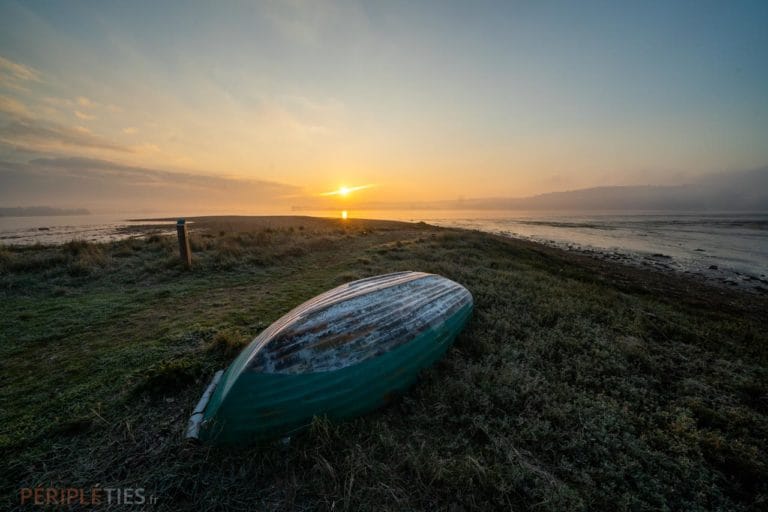
Head for the Monts d'Arrée and Brittany's heritage
Head back to Daoulas to continue your journey inland to Sizun, at the gateway to the Monts d'Arrée. From here, you enter a different Brittany, where time seems to stand still!
Although the highest peak is only 384 metres high, the relief is real and, in contrast to the coastline, it's a complete change of scenery. In places, amid the rocks and heather moors, you'd think you'd landed in the middle of Connemara!
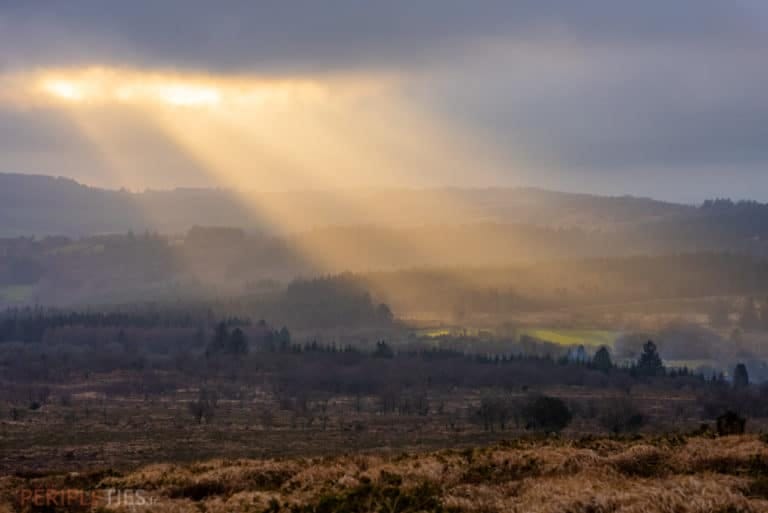
The parish enclosures bear witness to Brittany in the 16th and 17th centuries
Wind your way through the peaceful countryside, following in the footsteps of the parish enclosures. This architectural and religious heritage bears witness to Brittany's economic prosperity in the 16th and 17th centuries.
In those days, the region was enriched by the trade in linen cloth exported by sea to Holland, England, Portugal and America. This growth led to the construction of mansions, manor houses and sacred buildings in the middle of the countryside!
You'll find some of the most beautiful enclosures in Lampaul-Guimiliau, Guimiliau and Saint-Thégonnec.
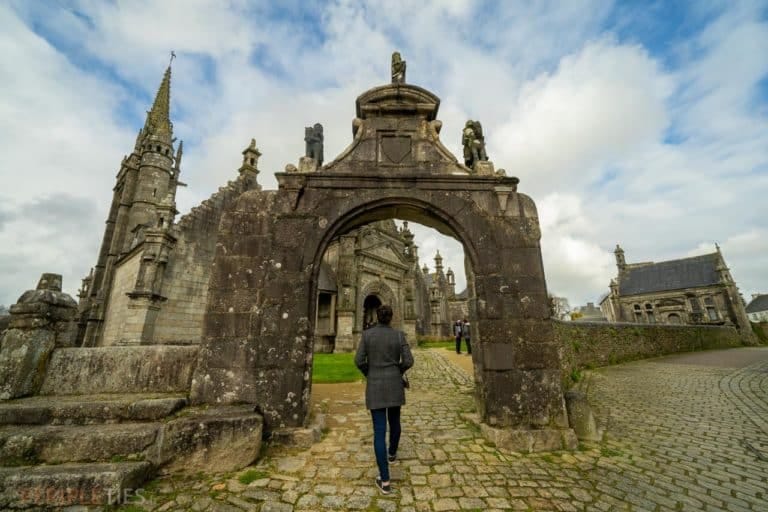
A walk in the Forêt de Huelgoat
Head for the peaks of Roc'h Trévézel and Saint-Michel mountain (380 m), recognisable by the chapel on its summit which served as a refuge for shepherds in the 19th century. Below is the lake, or rather the Saint-Michel reservoir, whose shores you can reach from the villages of Brennilis and Botmeur.
At the foot of the southern slopes of the Monts d'Arrée, there's another must-see site: the Huelgoat forest. It is the source of many myths, with its silver river, rocks, caves and devil's chasm... The Huelgoat forest is ideal for walks, along the old canal used to transport ore, in the heart of the forest, on the horseshoe trail or along the Clair-Ruisseau walk.
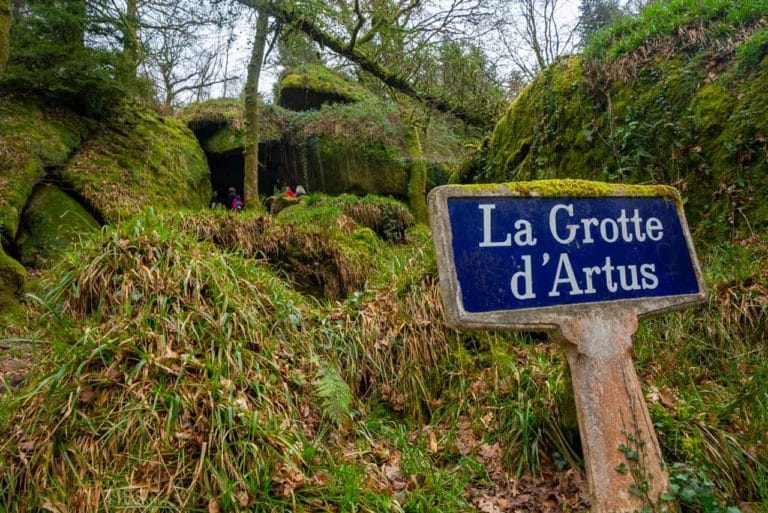
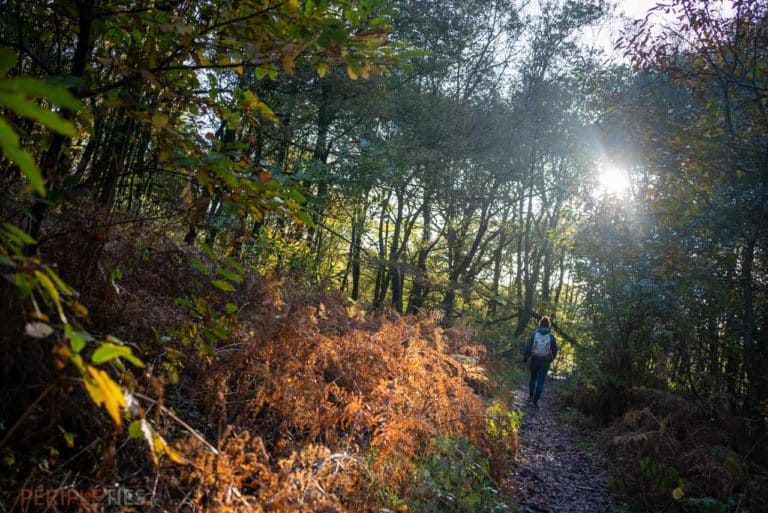
What can you see on the Crozon peninsula?
The Crozon peninsula is the epitome of Brittany, with its abers, jagged coastline, cultivated plains, mountains, coves and white sandy beaches. This wild, natural site is the ideal place for beautiful walks and a breath of fresh air.
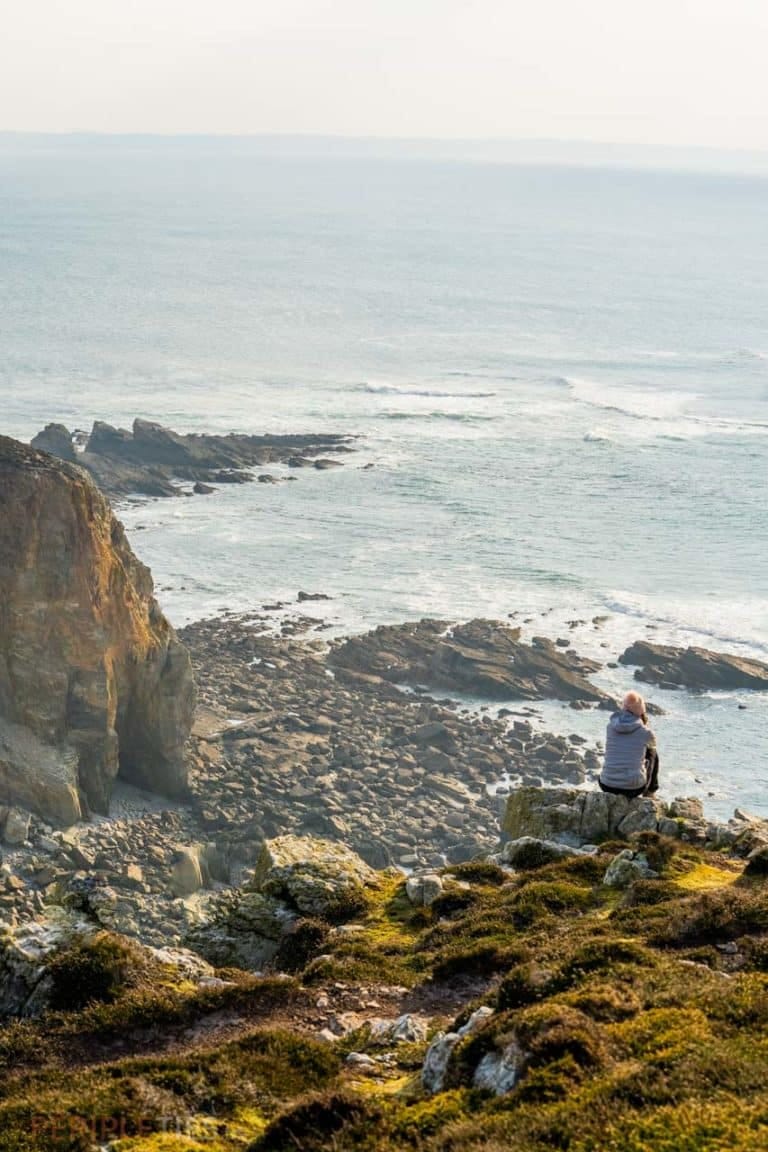
Crozon from headland to headland as far as Camaret-sur-mer
In order, there's the Pointe des Espagnols, the Fort des Capucins, the Pointe de Pen Hir, the Pointe de Dinant and, at the very end, the Cap de la Chèvre, like the prow of a ship piercing the ocean.
So many highlights to punctuate your excursion, not forgetting of course the pretty and cheerful seaside town of Camaret-sur-mer. You can see the old fishing boats along the coast, a scene as colourful as it is picturesque on the way to the chapel of Notre Dame de Rocamadour and the Vauban Tower.
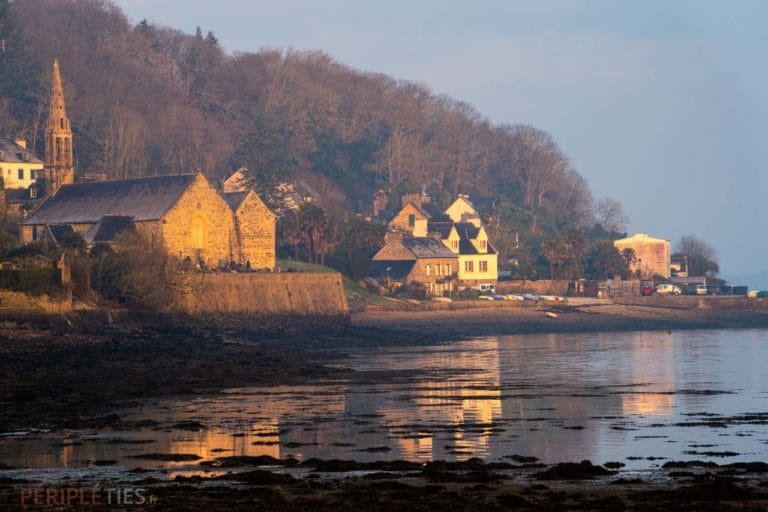
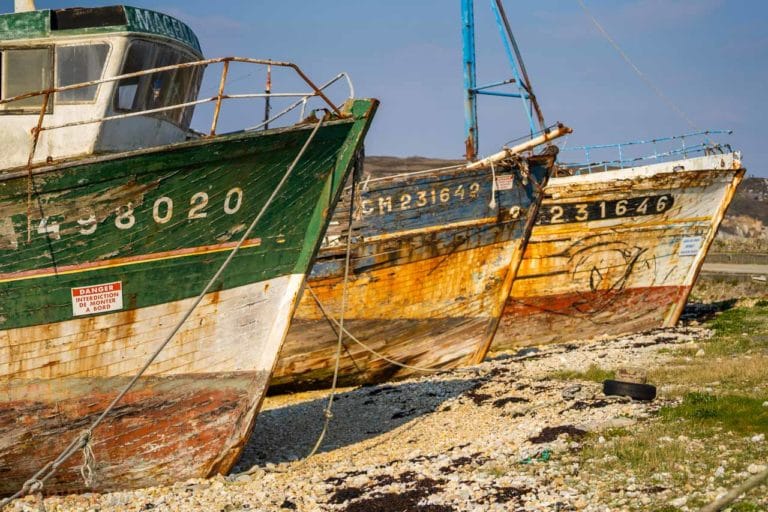
Ménez Hom, resurgence of the Black Mountains
Finally, still on the Crozon peninsula, linger at Ménez Hom, a resurgence of the Montagnes noires to the east, reminiscent of the landscapes of the Mont d'Arrée. The summit offers a 360° panorama of the peninsula and the whole region....
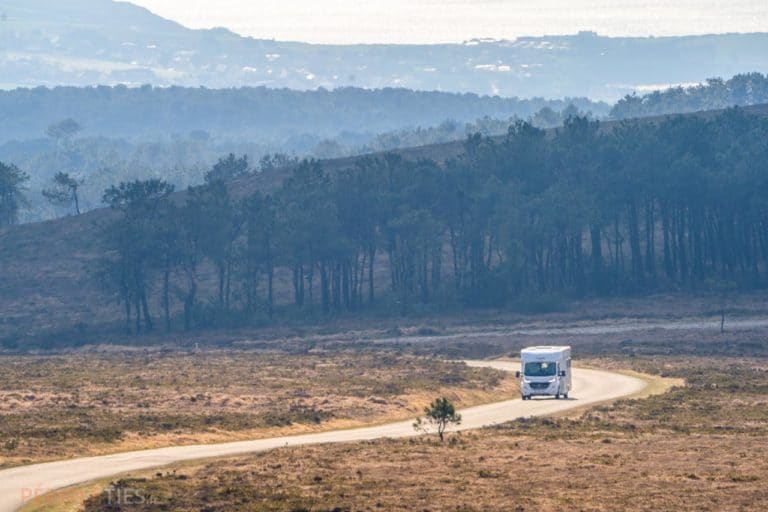
Visit Southern Brittany and the Gulf of Morbihan - Map and itinerary
We are now entering the second part of our motorhome itinerary. A journey that begins in the south of Finistère, in the Quimper area and on the Cornish coast. As in the northern part, don't hesitate to supplement our information with the Guide du Routard or the Guide Vert published by Michelin on Southern Brittany to find some good addresses.
Motorhome spots near Quimper
Visiting Quimper is a good idea. You can admire the historic centre, the cathedral, the museums, the Locmaria district and the many markets.
The town currently has just two campsites: Camping Municipal Bois du Séminaire and L'Orangerie de Lanniron, but you can find spots in the surrounding area thanks to motorhome apps that will help you find pitches.
The irresistible Point du Raz
While most visitors come to this part of Brittany for the irresistible Pointe du Raz and the Ile de Sein, the surrounding area is also famous for the Cornish coast with its fishing ports (Loctudy, Le Guilvinec), Penmarc'h and its lighthouse, the La Torche surf spot at Plomeur, La Forêt-Fouesnant and the Glénan archipelago. We also recommend the more confidential Pays Bigouden.
The key town of Concarneau
Then head for the pretty town of Concarneau for at least half a day's excursion. The walled city and its fortifications will probably be one of the highlights of your trip to Brittany.
You can stroll along the ramparts, wander through the narrow streets, sit down at a terrace to sample some oysters, or go to the quays during the fish auction to immerse yourself in the typical atmosphere.
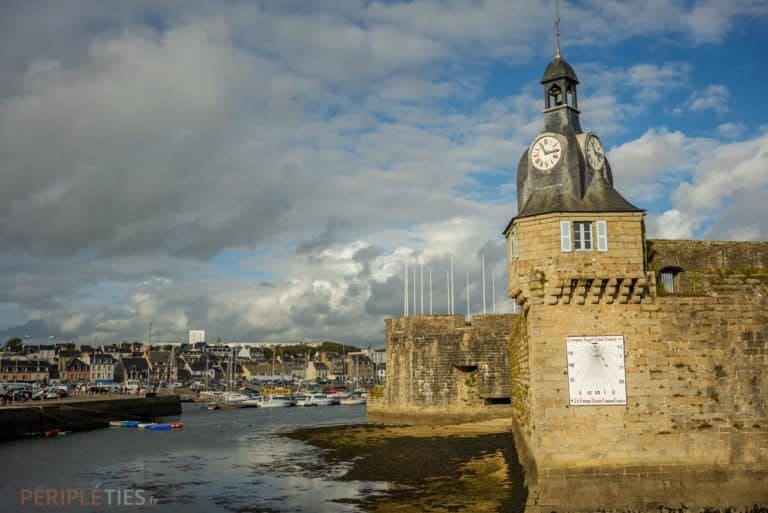
Heading for the Pays des Aven
Continuing along the coast to the south after Concarneau, your route opens out onto the coast of the Pays de l'Aven, an area carved out by rivers into which the ocean rushes (Aven, Belon, Laïta) during the tides.
Some of the towns you'll want to visit are Pont-Aven, Trégunc, Névez and the surrounding area, with its picturesque standing stone houses.
Closely linked to the history of Brittany, these pretty "Men Zao" with their thatched roofs were built from granite blocks that were in the way of working the land. You can stop off at one of the many campsites ideally situated on the ocean shore.
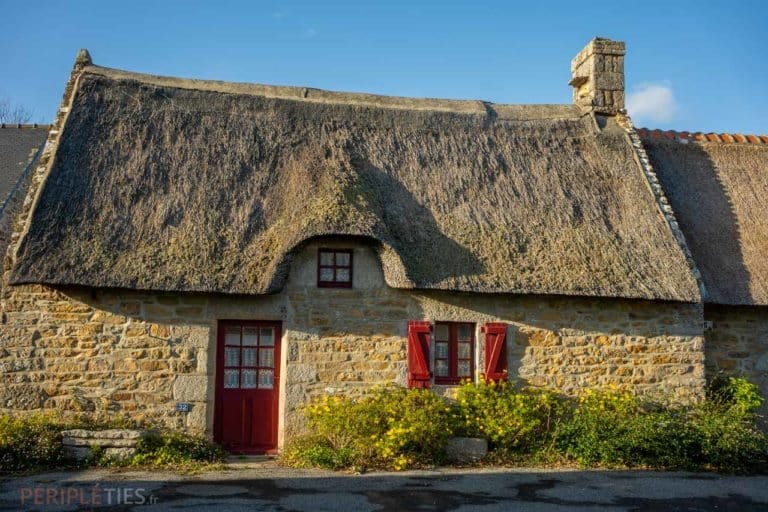
White sandy beaches and marinas
The rest of the coast between Moëlan-sur-mer and Larmor-plage is a succession of fine sandy beaches, small marinas ideal for water sports and seaside activities, and picturesque little islets.
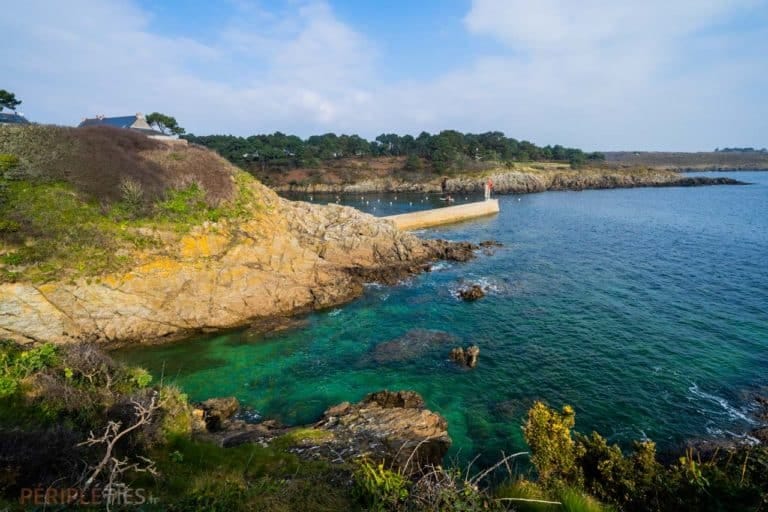
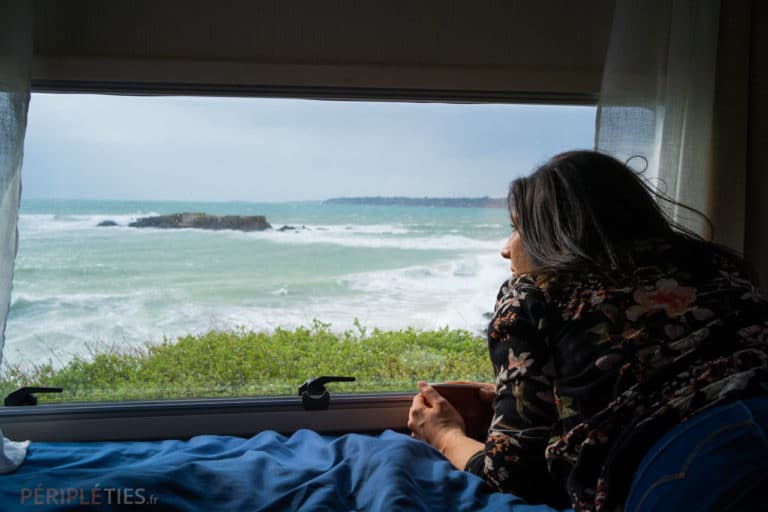
Morbihan, between sea and countryside
You are entering Morbihan, near Lorient. The capital of Brittany and home to some of the world's greatest solo yachts, southern Brittany is a multi-faceted region.
The only department to bear a Breton name (Mor-Bihan, meaning "Little Sea"), it has inherited it directly from the Golf course, which is not an 18-hole course, but rather a small inland sea, squeezed between Locmariaquer and Port-Navalo (Arzon).
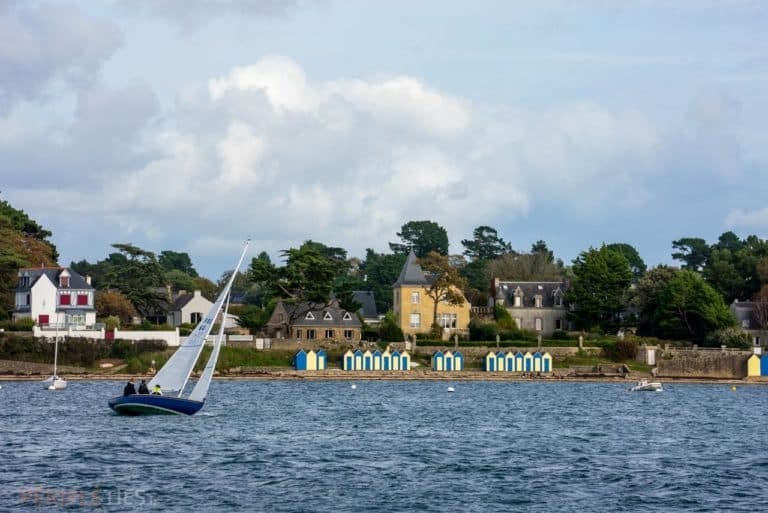
The Breton Riviera
The climate is favourable, the winds constant. But it's also a place where small seaside resorts flourish. There's even talk of the Breton Riviera... That's all there is to it... So it's difficult to find somewhere to park your motorhome, but this varies according to the season.
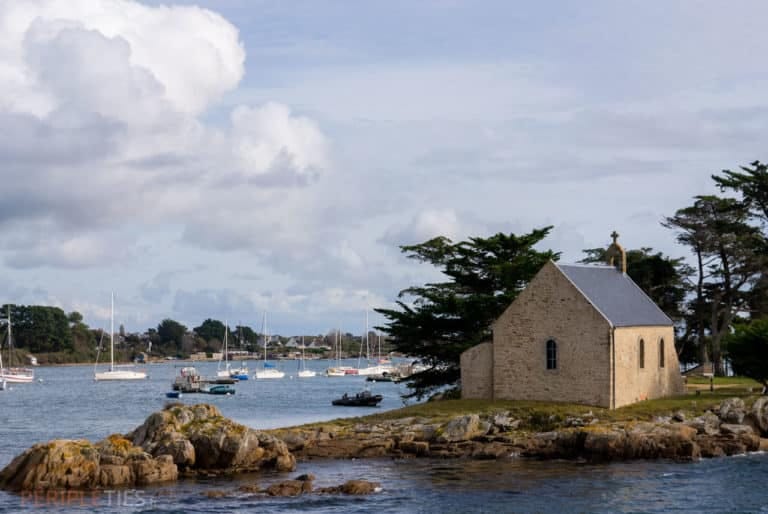
The Lorient base and the Cité de la Voile Éric Tabarly
The historic centre of Lorient stands out from the rest of the tourist scene, as nothing remains of the city, which was destroyed by Allied bombing in 1943 (Nazi Germany had used it as a submarine base).
If you get the chance, take a look around "La Base" to see the former gigantic Blockhauss, skilfully converted.
The Lorient Base is now home to an ocean racing centre and the Cité de la Voile Éric Tabarly. Last but not least, the town is the gateway to a number of little gems in the surrounding area: Port-Louis, whose ramparts once guarded the Lorient roadstead, the island of Groix and the Ria d'Étel.
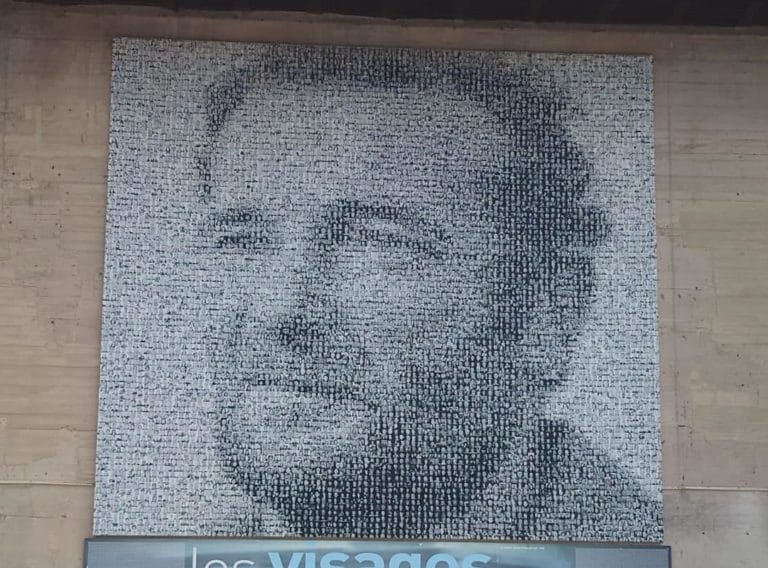
Must-see sites in Brittany
This underwater sandbar is an intriguing phenomenon, moving with the winds and currents and appearing during the tides! The sea breaks along the entire length of this mouth, which is notoriously difficult for boats to navigate.
The Ria d'Étel and the island of Saint-Cado
For a pleasant stroll, head for Étel or Plouhinec. In the middle of the Ria, the small island of Saint-Cado, linked to the mainland by a stone bridge, has all the makings of a Brittany postcard!
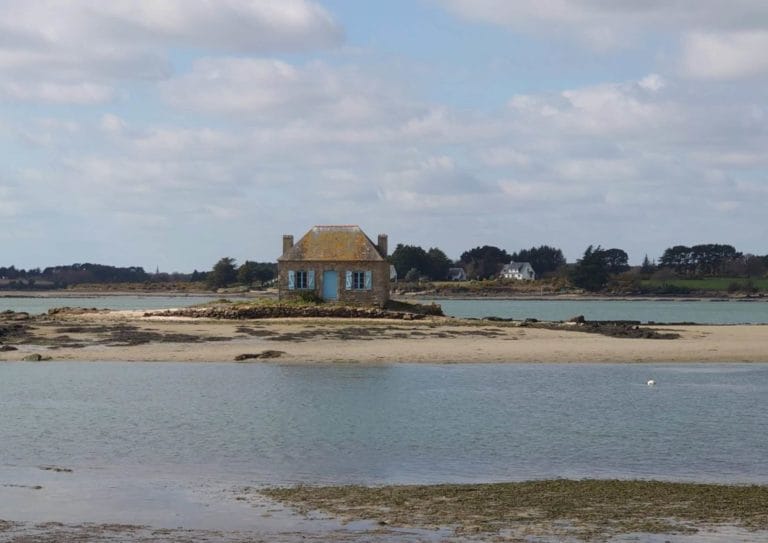
The Quiberon peninsula in a leisure vehicle
The next stage of your journey takes you to Quiberon. This peninsula, linked by a long, narrow strip of sand, is one of the most famous places in Morbihan.
To the west is the spectacular wild coastline, and to the east are numerous beaches, surfing spots and sand yachts. As for Quiberon itself, it's a seaside resort, too busy with tourism for our liking. A word of advice: if you're not planning to stay at a campsite in Quiberon, explore the wild coast early in the morning and then continue on your way to other horizons.
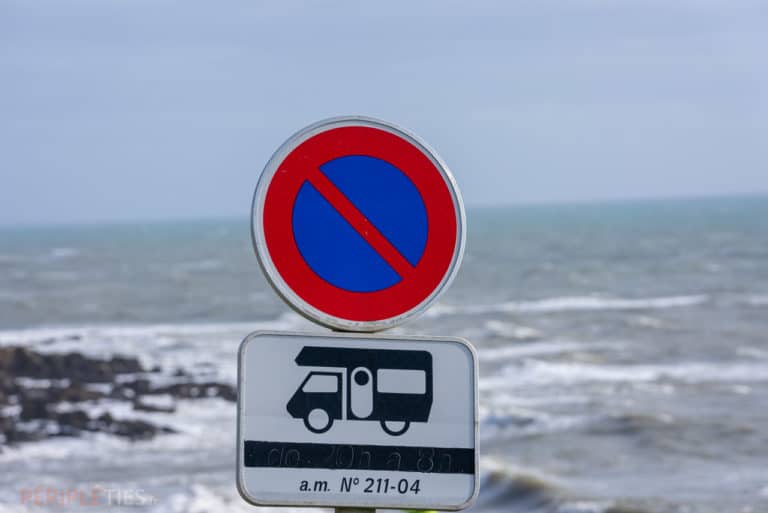
Campsites with sea views on the Quiberon peninsula
Unless you want to spend a few days at one of the many campsites with sea views on the peninsula and explore the surrounding area by bike, Quiberon is not really the ideal destination for motorhomes. In the surrounding area, there are plenty of car parks with height bars and parking bans from 8am to 10pm (some places are protected national parks).
However, the off-season is better for exploring, although most campsites close at this time. You can find them using the applications for motorhomes, vans and camper vans. You can also find a selection of the best campsites from Le Routard all over France.
Breton megaliths, menhirs and dolmens
In the same day, you can contemplate the Carnac alignments, mysterious formations of megaliths, menhirs and dolmens dating from the Neolithic period. The site is open to the public from 1 October to 31 March, with guided tours available the rest of the year.
But you can also see these curious rock formations on the Locmariaquer site in several places in the Gulf of Morbihan and inland.
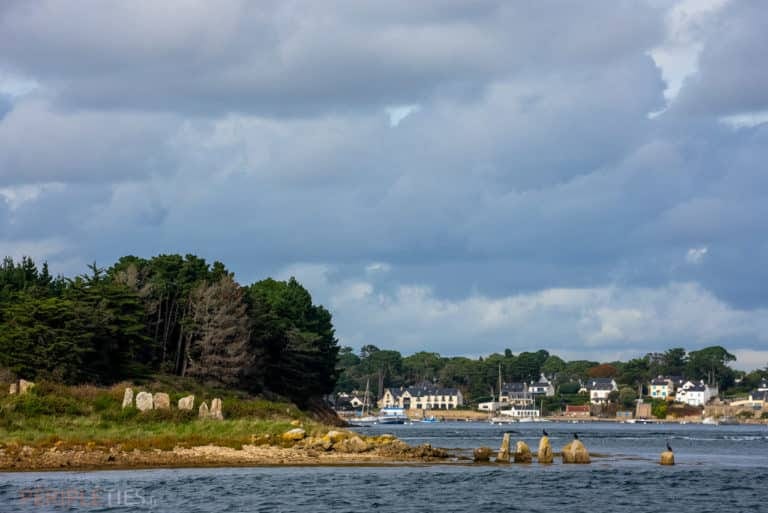
A cruise in the Gulf of Morbihan
Next, head for the Gulf of Morbihan. Measuring 5km wide and 21km long, this small sea opens out onto the Atlantic through a one-kilometre-wide gulf between Port-Navalo and Locmariaquer, at the heart of which lies the town of Vanne.
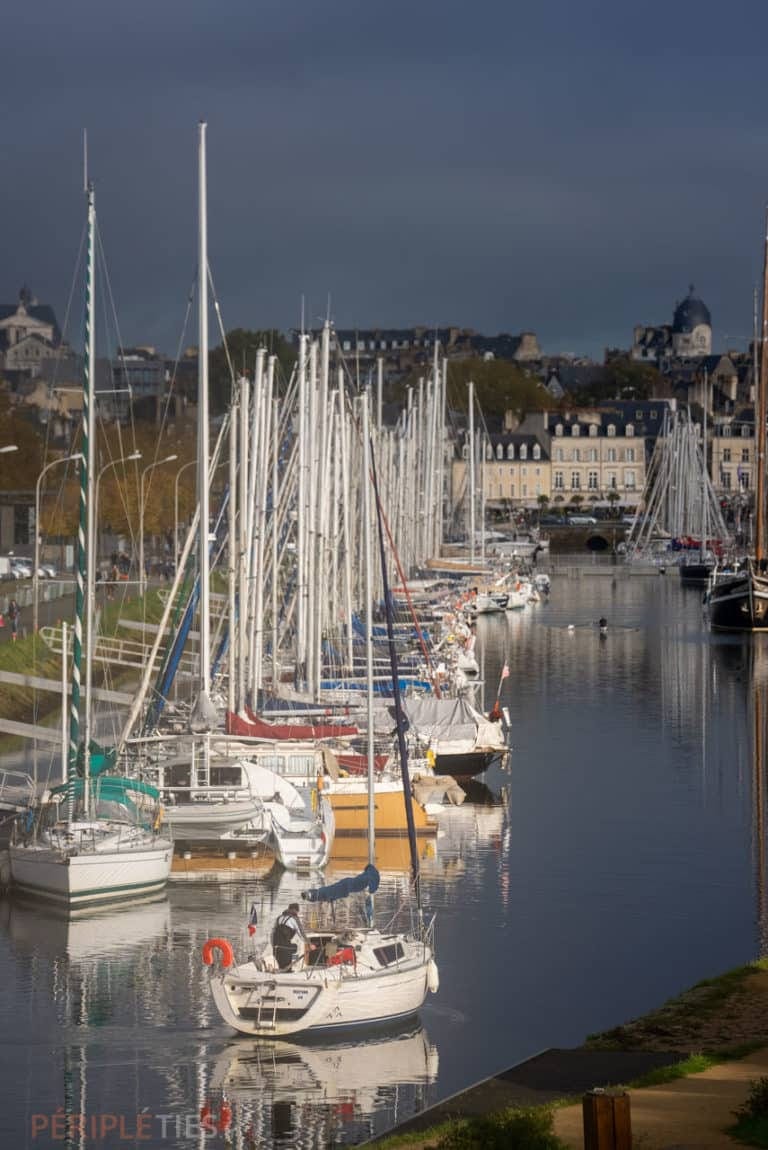
The Gulf of Morbihan is home to countless islands and islets that, according to legend, are as numerous as the days of the year! In fact, the Gulf of Morbihan has around forty of them: inhabited fishing ports, nature reserves, private paradises, wild islets topped by menhirs and overflown by birds... Striking!
For around twenty euros, we recommend a short cruise to discover the Gulf. Departures are from Baden, Arradon, Vannes or Port-Navalo, and you can even make a stopover on Île aux Moines and/or Île d'Arz.
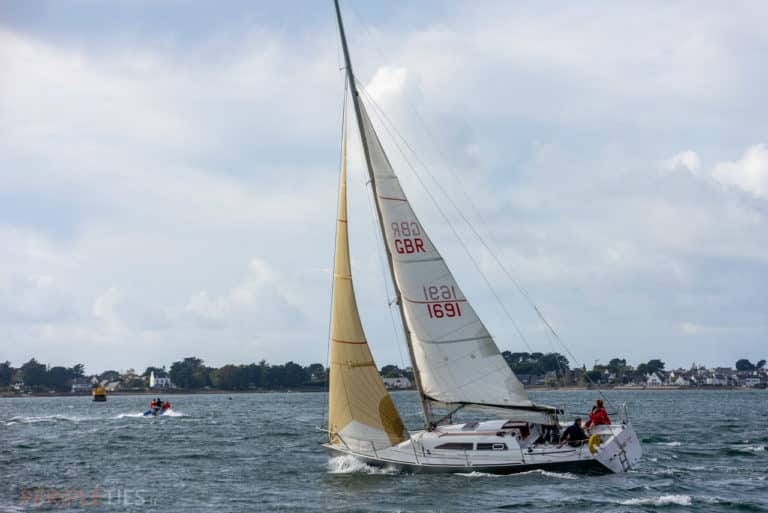
The most beautiful villages in Morbihan
As you leave the Gulf of Morbihan, we suggest you head inland to discover a different face of southern Brittany by motorhome. Far from the coast, this is the part of Brittany that is home to the most beautiful villages.
La Roche Bernard, a small town full of character
Head for the mouth of the Vilaine at La Roche Bernard. A small town full of character, there's plenty to marvel at in its unusual location and cobbled streets, its old houses opening onto the old port and its fleet of old sailing ships!
The town's maritime past is on display at the Musée de la Vilaine maritime, located in the Château des Basses-Fosses. The town is also a favourite haunt of craftspeople (potters, sculptors, turners and painters), and it's easy to see why!
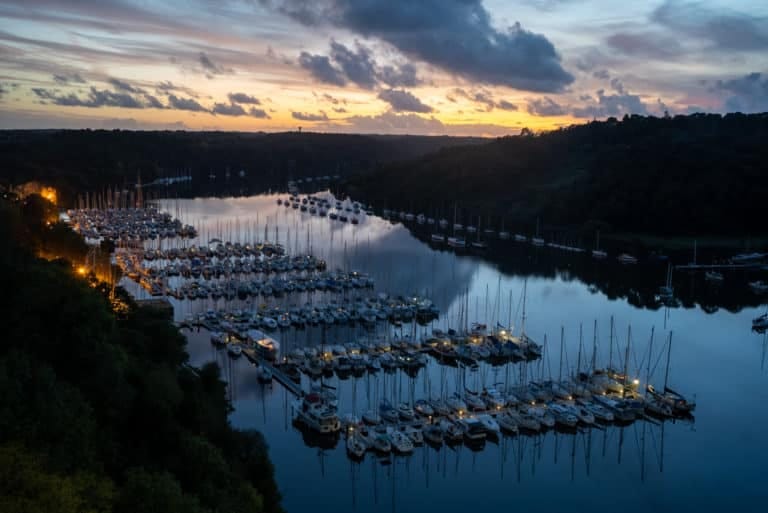
Rochefort-en-Terre, Favourite Village of the French in 2016
Another must-see village on your route is Rochefort-en-Terre, around thirty kilometres away. Here too, old houses, private mansions, narrow streets and squares form a unique architectural whole.
A walk to the castle and perhaps a visit to the fantastic world of the Naïa Museum (Tim Burton atmosphere guaranteed), could be an original way to round off your visit.

Malestroit, on the banks of the river Oust
Next, head for Malestroit, then Josselin. At first sight less attractive than the two previous stops, Malestroit has an original location, on the banks of the river Oust. It's worth getting to the heart of the village to admire its beautiful heritage, enriched by the Crusades and the flourishing trade of the Middle Ages.
Finally, Malestroit was also a land of resistance. The Breton Resistance Museum, which will be reopened in 2021 following renovation work, is located nearby.
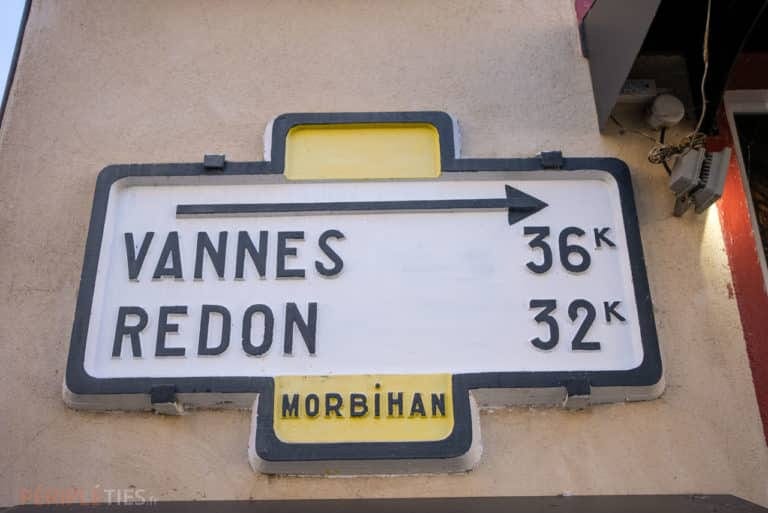
Josselin and its castle
Less than 30 kilometres away, we recommend a stopover in Josselin. A noble town in bloom, the town's history is linked to that of its castle, which dominates the valley of the river Oust.
It is still owned by the Rohan family, one of the oldest families in Brittany. Half a day is not too much time to stroll through the narrow streets, visit the castle and the Notre-Dame-du-Roncier basilica before heading off to the Brocéliande forest.
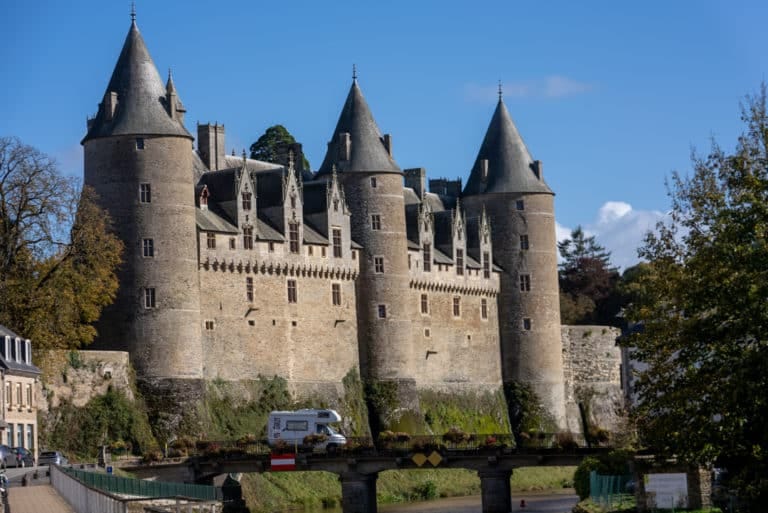
Where to go in Brittany with the family?
Finally, to round off this trip to Brittany, we recommend that you head off to the Brocéliande forest, especially if you're with the family. The village of Tréhorenteuc is the gateway to the park. There are plenty of walks and hikes in the footsteps of the megalithic sites.
The myth of the Brocéliande forest
The sites are sometimes associated with Lancelot, Merlin the magician, the golden tree or Morgana the fairy. It's a little overdone at times, but it works very well if you're a family with children.
And don't forget to visit the Abbey of Notre-Dame de Paimpont, which hosts storytelling, music and light and sound shows throughout the season. A great way to round off your Morbihan tour!
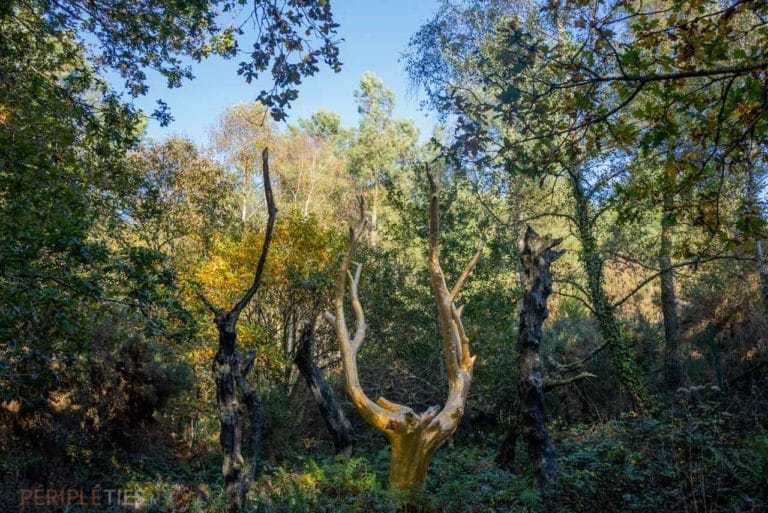
Where to park in Brittany? Campsites, service areas, Camping Car Park...
- Laber parking area, Roscoff. Free, unlimited and permanent parking. Service point (water and drainage) €3. N 48.71225 - E 3.99915
- Camper Park service and parking area, Roscoff. 48.71384° -4.00887°
- Aire de Camping-Car de Meneham, Kerlouan. Open all year round (€9/24h, with services).
- Camping municipal des Dunes, Saint-Marguerite by the beach, open from mid-June to September. Access to the craft terminal is €4, parking €9.70 with electricity. N. 48.56785 - E 4.65639
- Aire de Sizun, 500 m from the centre. Free parking and services. N 48.400299 - E 4.079080
- Le Fret service and parking area, Crozon - Water: €2.50. Parking: €4.75 - 48.17042 - N 4.30349
- Camping de l'île percée, Moëlan-sur-Mer. Campsite open all year with sea views. Pitch 21€ with electricity.N 47°47'17.52" W 3°42'4.68"
- Motorhome park at Étel. View of the sea and the Barre d'Etel, beach and shops nearby. Parking 8 € with emptying and full water tank (campsite from April to October). N 47°39'2.52" W 3°12'7.452".
- Campsites and motorhome parks in Carnac. Service area at Square Illertissen where you can park for €5 and have your oil changed and electricity supplied for €2. N 47°35'43.8504" W 3°4'37.7004"
- Camping car park in Baden. Pier site for Ile aux Moines and Ile d'Arz. Parking and services from €9.90. N 47°36'20.8836" W 2°52'22.332"
- Motorhome park in Josselin. Free parking in the large car park. Water and drainage services: €2. N 47°57'22.7124" W 2°32'59.7048"
- Motorhome park at Paimpont. 70 parking spaces, free wifi access, sanitary facilities available. Parking 6 euros and water and waste disposal services 3 €. N 48°1'22.08" W 2°10'14.664"
